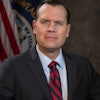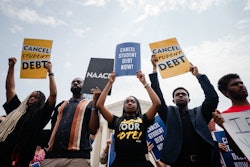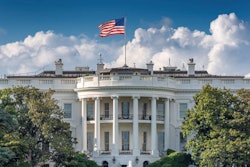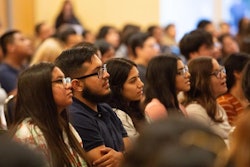Following the model of four-year institutions, community colleges across the country have now begun to hire chief diversity officers (CDOs) at increasing rates, according to a recently published book by diversity officers and education professionals.
The book, Inclusive Directions: The Role of the Chief Diversity Officer in Community College Leadership, co-authored by Dr. Clyde W. Pickett, James A. Felton III and Michelé E. Smith, details the slow, but growing administrative shift of the CDO role at these institutions.
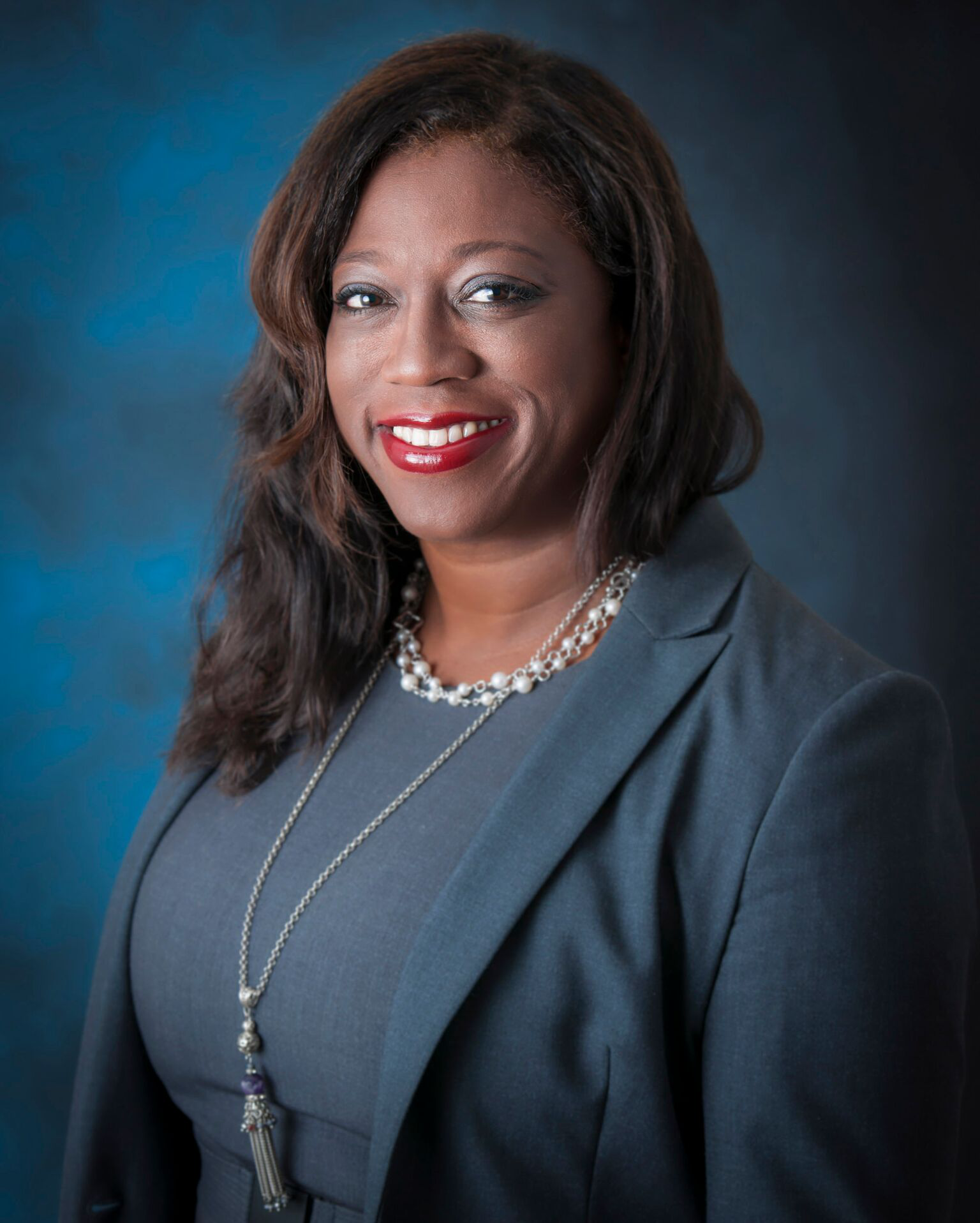 Sharon Bland
Sharon Bland
“Community colleges have long been places for diversity in terms of representation of students who enjoy open access to higher education,” the authors say. “However, having a central role, central office or central individual to provide guidance for this diverse population has been slow to develop.”
The first recognition of diversity and inclusion at community college stretches as far back as 1966, when students created the first Black Student Union (BSU) at San Francisco State, the scholars note. This activism and call for more diversity within the student population, and then at the faculty level, sparked conversations at other campuses and a move to create an institutional role that could prioritize diversity and inclusion at the administrative level.
Insight into why this phenomenon is gaining traction today calls attention to a shifting demographic of students attending school, as more students of color, low-income students and first-generation students enter into higher education than in previous years.
Sharon Bland, chief equity and inclusion officer at Montgomery College in Maryland, says that hiring people under a “chief diversity officer” title has become more comprehensive, which is why many community colleges are moving toward including the words equity and inclusion in their titles, she says.
“In our current landscape, we are really moving beyond the notion of counting the numbers of people who are in the room,” Bland adds. “When we think about the broader notion of equity, we talk about making sure that we look at who’s trying to be in the room and who can’t … and we look at making sure that people feel safe when they are isolated or separated and making sure that it’s about the experience of feeling that they are in equitable situations.”
Similarly, with inclusion, CDOs must ensure that their institutions are places where everyone’s voice or idea can be heard.
Community colleges are often a first step for students entering the higher education pipeline, and the spaces are the most diverse and inclusive segment of the higher education community, the American Association of Community Colleges (AACC) and the Association of Community College Trustees (ACCT) said in a joint statement.
As a result, these colleges are entrusted to create “safe, respectful and responsive” educational environments for their students, “where the potential of students can be attained at the highest possible level,” according to AACC and ACCT officials.
Both organizations represent more than 1,100 community, junior and technical colleges in the U.S. Their joint statement reaffirms their commitment to enhance equity, diversity and excellence in student success and leadership development at member institutions.
The National Association of Diversity Officers in Higher Education (NADOHE) also recognizes this commitment. Dr. Archie W. Ervin, vice president of institute diversity at Georgia Institute of Technology and president of NADOHE, says that the association has collaborated with AACC for the last few years and has added former community college CDOs to the board to educate the organization about developments of the role.
This is, in part, because community colleges have now begun to experience the kind of diversification that was not thought of 20 years ago, Ervin says.
“The challenges that many four-year institutions have faced for the last 40 to 50 years are manifesting themselves at that [community college] level now,” Ervin adds. The administrator knows that community college students are no longer thinking, “‘I’ll go and get my four courses in and go on and do what I’m doing,’” he says.
“I think that’s one of the reasons that you see this growing concern about being able to provide a leadership structure where these important factors of institutional attachment are given some leadership and not just afterthought,” Erwin adds. “Therefore, the options have been to go to the CDO model of leadership around diversity, equity and inclusion.”
And although the roles of CDOs at community colleges and four-year institutions may be similar, there are still concrete differences. CDOs at four-year schools have goals for students to graduate with a bachelor’s degree, Bland says. At community colleges, she says, “Our [goals] are we want you to either get an associate’s degree, or we want you to transfer successfully, or we want you to come out with that certification that you need to advance in your career or begin a career.”
Defining diversity, equity and inclusion
Generally, two- and four-year institution diversity officers alike note that a large problem for the CDO role is simply defining what diversity means to an institution. Any miscommunication between the officer and the institution about implementation of diversity and inclusion initiatives can consequently affect goals for student success and completion.
For some community colleges, “the problem is that administration really doesn’t know what the chief diversity officer is really capable of doing,” says Andrew Duffield, director of institutional diversity and inclusion for Tarrant County College District in Texas. “A lot of the times, the work of the diversity office is stifled somewhat because people don’t understand what the role is really supposed to entail.”
Bland began working at Montgomery College (MC) in May, following positions at three other higher education institutions and proactively countered this challenge by working with senior leadership to develop formalized definitions for cultural competency, diversity, equity, access and inclusion.
MC defines cultural competency as “the state of having and applying knowledge and skills in four areas: awareness of one’s own cultural worldview; recognition of one’s attitudes towards cultural differences; realization of different cultural practices and worldviews; and thoughtfulness in cross-cultural interaction.
This framework enables the college to be insightful and develop methods to “critically examine how cultural worldviews influence perceptions of power, dominance and inequality,” a college statement reads. The now minority-majority college has since reconsidered its hiring practices and curriculum so that the demographic of employees, faculty and staff and the courses offered reflect the experiences of the diverse student population.
Bland also launched a four-month “listening tour” and a “pizza for your thoughts” series. The initiatives included faculty, staff and students. Students from all three MC campuses were able to share what their needs were, share what they wanted to see at the institution and discuss how they were being treated by faculty, staff and administrators.
A comprehensive review of college-wide programs, like “Boys to Men” and “Achieving the Promise,” identified the number of students served, the outcomes and scalability of the programs and considered what programs are working. An additional equity and inclusion survey from an outside consultant supplemented institutional efforts to review current and best equity and inclusion practices, Bland says.
On the national scale, NADOHE disseminated 12 professional standards for diversity officers in 2014 in an attempt to guide the role that is ever-changing. The standards are not meant to be a “hiring guide” per se, but, rather, a set of thoughtful and comprehensive guidelines to assist the chief diversity officer in providing tailored “effective institutional leadership,” says Dr. Benjamin D. Reese Jr., vice president for institutional equity at Duke University and former president of NADOHE.
The standards emphasize the importance of understanding the legal, social, historical and institutional undercurrents of the CDO’s work as an “organizational change agent for equity, diversity and inclusion,” within a larger team of administrators and faculty who share similar goals, according to NADOHE.
A dilemma for CDOs
While strides are being made to increase the number of chief diversity officers hired at community colleges in the U.S., many current officers worry that the role as it is now does not have the executive or presidential ties that it needs to make effective changes.
Duffield says NADOHE’s national standards are helpful to him because he currently faces questions around the existential role of his position within the larger Tarrant County College District. He wonders if the role is “a support system for the district” or if the CDO should be in charge of all diversity efforts.
Still, in terms of authority, his position at the director level is not comparable to people at similar positions at most four-year colleges. He says, “In community colleges, there is not a lot of administration that understands that this position needs to actively be in the executive staff of an institution” in order to have “the positional authority or positional power within the district to create the cultural change that needs to happen.”
Dr. Joan B. Holmes, special assistant to the president for equity and special programs and Title IX coordinator at Hillsborough Community College in Florida, echoes this sentiment. She says that the current community college CDO model can somewhat limit ambitious diversity plans for a community college if the diversity, equity and inclusion officer does not report directly to the president.
“Historically, or at least in the state of Florida, many of the diversity officers were located in Human Resources,” she says. Other diversity officers may be embedded in the office of the provost, the compliance office, the Equal Employment Opportunity (EEO) office or a multicultural office.
“Philosophically, even at the university level, that is not a good model because it does not give the independence of the office to address diversity issues in a proactive way,” Holmes warns. “The employees are many times reticent or resistant to pursue HR but more willing to pursue an independent office of a chief diversity office,” she adds.
Holmes believes efforts at the national level to elevate community college diversity officers will give them a greater voice at their institutions. She plans to attend a timely AACC convening this month that brings CDOs together to brainstorm and identify a preferred CDO model that will get more officers working independently and reporting to higher leadership.
“It’s a much needed moving part, and I’m glad that people are going into the conversation and realizing that the need is there,” Duffield says. For chief diversity officers who are already aligned with the office of the president, this direct link can make all the difference.
Duffield previously served as interim chief diversity officer at the Coast Guard Academy in New London, Connecticut. He recalls reporting to the superintendent of the institution and having regular meetings on policy, institutional direction and everything else that intertwined with various divisions across the campus.
“That helped with retention, [and] it helped with recruiting aspects,” he says, because it put him in place as a voting member on the admissions selection board.
“It holistically worked well and as far as diversity numbers are concerned at the Coast Guard Academy … they went up,” Duffield adds. “When you have those individuals in the room who are concentrating on that type of conversation, it does help.”
Bland attributes the independence and effectiveness of her work at MC to the support of her president, Dr. DeRionne P. Pollard.
She notes that Pollard intentionally wanted the chief equity and inclusion officer position to be a “horizontally-looking” one, as opposed to one that looks “vertically in the silos of academic affairs, student affairs or advancement or community engagement,” she says.
“The president’s office sets policy and plans for the college community,” she says. “When something comes out of my office — the Office of Equity and Inclusion, which is in the Office of the President — it’s the president’s plan.”
This access has enabled Bland to create a presidential advisory committee on equity and inclusion, tasked with developing a five-year, master plan for equity and inclusion. It has allowed her to work with the Ombuds office, employee and labor relations office, and Title IX office, to create required multicultural and diversity trainings and a visual road map for employees around equity and inclusion issues.
And presidential support has allowed Bland to bring awareness to the current need for employee diversification at the college, something she believes is essential to helping students succeed and feel that they can relate to faculty and administrators who teach or support them.
“It’s a tough conversation to say, ‘You know what? We need to do better in this area, and I’m going to need you to own this.’ ‘We need to change our budget to reflect our new priorities, and I need you to own that.’ It’s a different conversation,” she says.
In a role that holds the community college accountable for making the institution inclusive and equitable for the new millennial, first-generation or underserved student, higher administrative impact is more important than ever, several diversity officers say.
“It’s a moving mammoth. It’s huge, and it’s moving slow,” Duffield says. “But I’m really looking forward to the shift of institutions really prioritizing and putting diversity and inclusion up and forward for their institutions.”
Tiffany Pennamon can be reached at [email protected].




